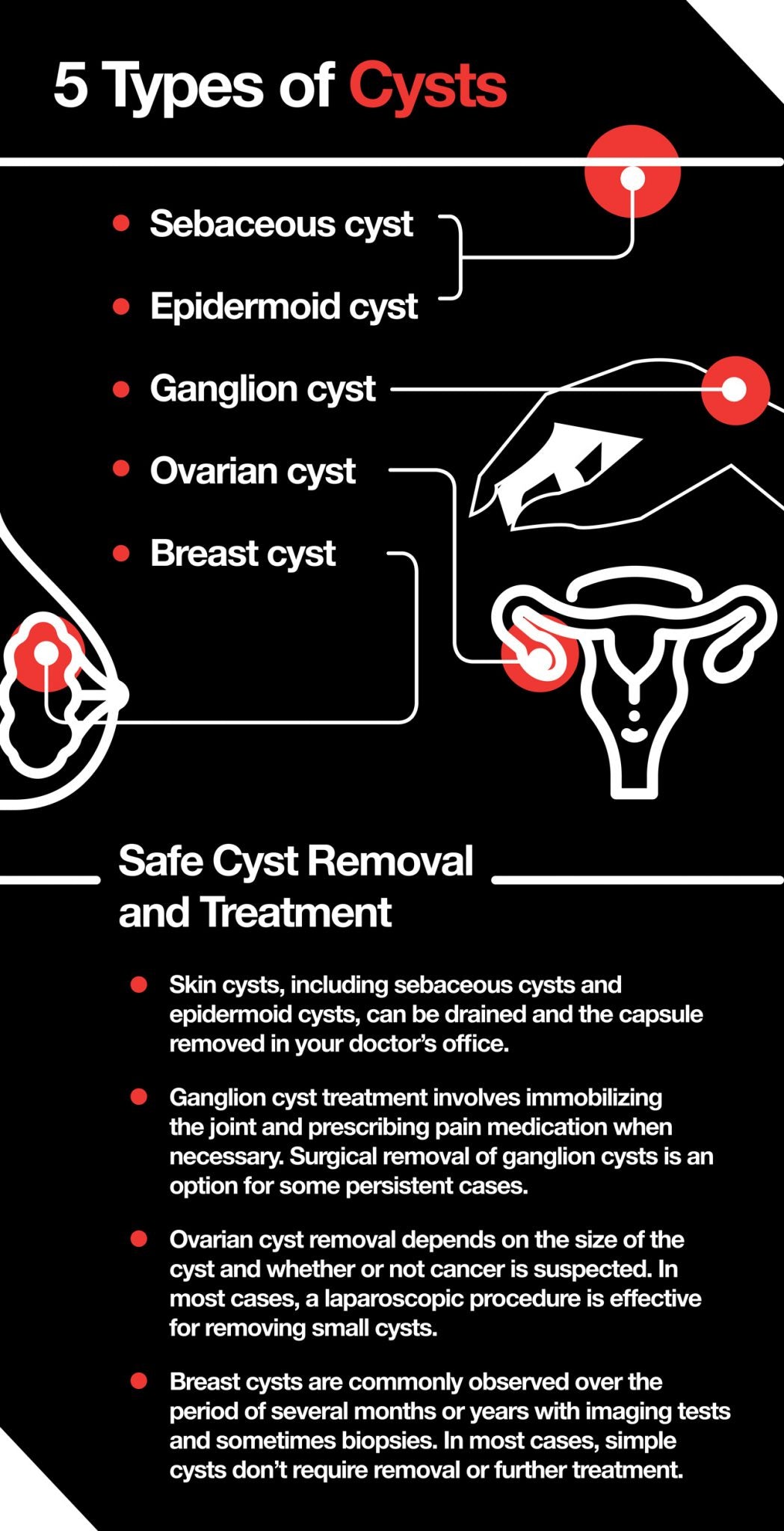How Do You Get Rid of a Cyst?
 By: by Amino Science
By: by Amino Science

The Internet is filled with videos and pictures of people (and doctors!) popping cysts or even lancing the skin to pull out a cyst. Let’s be clear—do not pop, squeeze or lance a cyst—this is not safe. So how do you get rid of a cyst safely?
What Is a Cyst?
Before we can get rid of a cyst, it is essential to understand what a cyst is and what causes it. Generally speaking, cysts are pockets of tissue that lie below the skin and contain a combination of air, fluid, and other substances. As the pocket fills with material, a cyst can grow quite large and become a bump above the skin.
As cysts grow they can cause pain below the skin’s surface. The internal pressure makes cysts painful to the touch. Pain is typically a sign of an infected cyst that needs treatment. In some cases, a cyst may need to be removed and a round of antibiotics prescribed.
What causes cysts? It depends on the type of the cyst. Some cysts can be caused by a buildup of keratin under the skin or ingrown hairs, while other types of cysts are caused by fluctuations in hormones or inflammation.
Is a cyst dangerous? It depends. The majority of cysts are benign, or noncancerous, but cancer is a concern for some types of cysts.

5 Types of Cysts
There are literally hundreds of types of cysts, lumps, bumps, and boils. Here are the five most common types of cysts.
1. Sebaceous Cyst
A sebaceous cyst forms in the sebaceous glands in the skin where hair follicles live. Sebaceous cysts often appear on the torso, neck, and face—but they can appear virtually anywhere. This type of cyst is caused by blocked sebaceous glands. Sebaceous cysts are very slow growing and noncancerous.
2. Epidermoid Cyst
Epidermoid cysts are small noncancerous cysts that occur around a hair follicle. Typically, this type of cyst is caused by localized trauma, but in rare cases, Gardner’s syndrome can cause an epidermoid cyst. Epidermoid cysts occur most commonly on the genitals, back, neck, face, and head, and they can become painful when infected.
3. Ganglion Cyst
Ganglion cysts are fluid-filled pockets of tissue that occur in the tendons or joints of the feet, ankles, fingers, wrists, or hands. The fluid can develop because of injury or trauma. Ganglion cysts are incredibly common and benign, and they occur more often in women than in men.
4. Ovarian Cyst
Fluid-filled sacs that develop on the ovaries are called ovarian cysts. Ovarian cysts can develop when an egg isn’t released during the normal monthly cycle. In some cases, ovarian cysts may cause pain. If you experience a sudden sharp pain in the pelvic region, or feel feverish or dizzy, an ovarian cyst may have ruptured. After menopause, ovarian cysts are linked to a greater risk of ovarian cancer.
5. Breast Cyst
The vast majority of breast cysts and lumps are noncancerous. However, the moment you detect any changes in your breast tissue make an appointment with your doctor. Benign breast cysts can cause tenderness and pain. They can be caused by changes in hormones and are most common in women before menopause according to the Mayo Clinic.
How Do You Get Rid of a Cyst?
Don’t trust the Internet as an authority on how to get rid of a cyst at home. Can you squeeze out a cyst? Not safely. Again, it is never safe to squeeze or lance a cyst—even cystic acne. Squeezing acne can cause infection and scarring. For the other types of cysts, it is critical to see your doctor to check any new or painful lumps and bumps you have.
Skin Cyst Removal
Skin cysts, including sebaceous cysts and epidermoid cysts, can be removed easily in your physician’s office. In addition to the liquid inside of the pocket or capsule, the capsule will need to be removed. That is why squeezing a cyst won’t get rid of it for good—with the capsule still in place, it will likely refill and possibly grow larger.
Ganglion Cyst Removal
If you are looking for a ganglion cyst home treatment, the best course of action is to relax and immobilize the joint, apply a warm compress, and take over-the-counter pain medications. Ganglion cysts can be surgically removed by a doctor if pain persists; however, most ganglion cysts go away on their own.
Ovarian Cyst Removal
According to the Cleveland Clinic, ovarian cysts typically go away without treatment. But in some cases, surgical removal may be required. If you have a small ovarian cyst, your doctor may do a laparoscopic procedure whereby a small incision is made in the abdomen and the cyst is removed. For larger cysts or when cancer is suspected a laparotomy may be performed so that the doctor can remove the cyst and ovaries, if necessary.
Breast Cyst Removal
For breast cysts, there isn’t a home remedy. Simple cysts aren’t associated with a higher risk of breast cancer, but when lumps and bumps in your breast occur talk to your doctor immediately. Imaging tests may be ordered, and in some cases a biopsy performed to rule out breast cancer.
If surgical removal is called for, consider supplementing with Heal, a clinically proven supplement that helps you heal faster from surgery and illness.

Up to 25% off Amino
Shop NowTAGS: conditions
Join the Community
Comments (0)
Most Craveable Recipes




 833-264-6620
833-264-6620



















